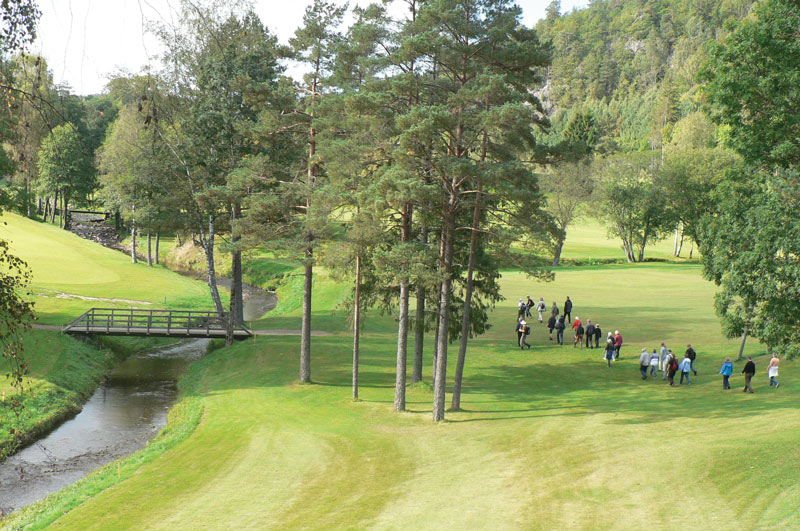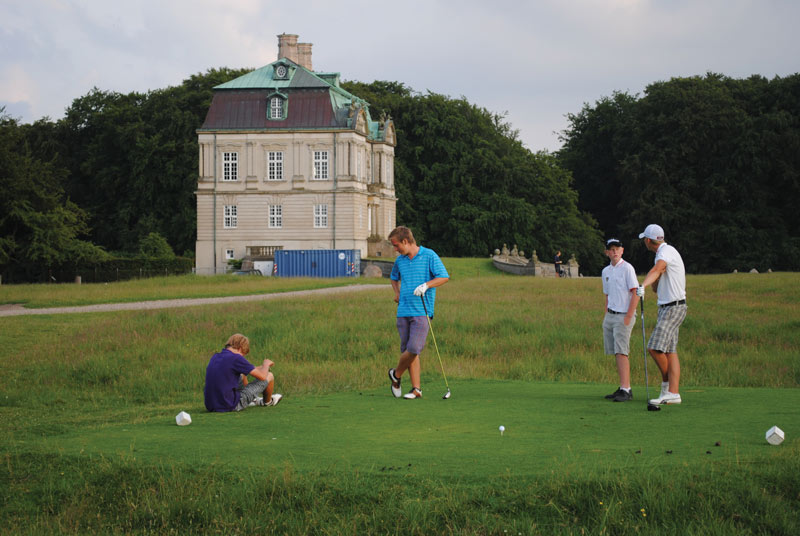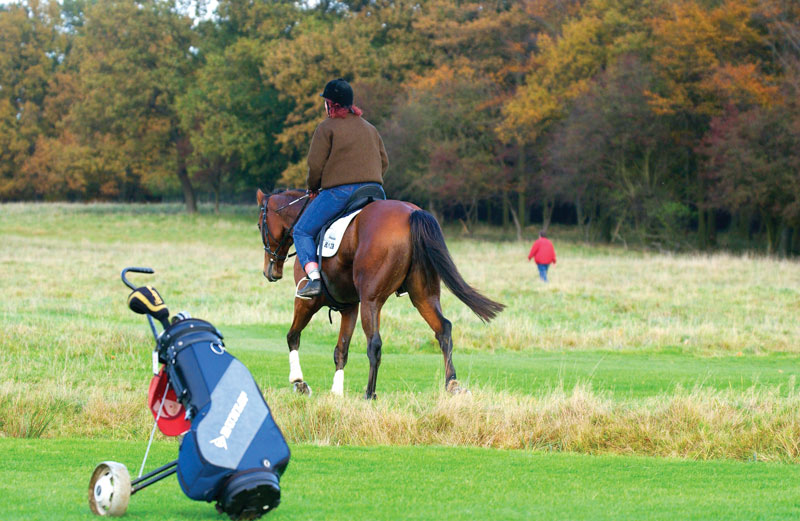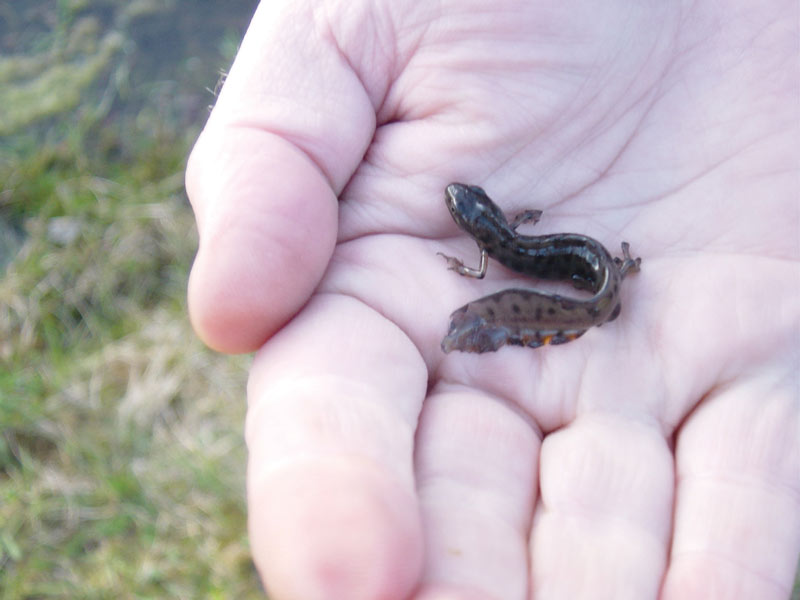
Cultural history tours at Nes Verk Golfpark in Norway offer an opportunity for the community and visitors to learn more about the history surrounding the park. Photos courtesy of the Scandinavian Turfgrass and Environment Research Foundation
Our hope is that this article will inspire others to take initiatives to create multifunctional activities on golf courses and thereby demonstrate the societal benefits of golf. The practical examples and ideas we share are not intended to be copied, but, depending on local conditions, used as inspiration for tailor-made solutions. In this article, we present examples of how four Nordic golf clubs are working with multifunctional activities and creating important value for the golf facilities and for society.
Multifunctional golf facilities
Many golf courses are underutilized resources. If golf courses were to serve several functions, they could provide a range of important services that are in demand. In addition to offering a high-quality arena for golf, golf facilities could also contribute numerous additional benefits such as improving biological diversity, conserving natural and cultural environments, providing classrooms for outdoor education, and offering recreational areas that are open to the public (3,4,6).
Today, urban landscapes are home to most of the world’s population, and the United Nations predicts that 66% of the world’s population will live in cities by 2050 (9). In the future, recreational areas will be used by more people. The decreasing amount of green area per capita increases the pressure on these areas to provide multiple ecosystem services. From this perspective, multifunctional golf facilities can benefit the local community by increasing residents’ opportunities to participate in outdoor activities (1,7).
Many golf courses are currently experiencing economic problems and are attempting to find new ways to support and expand their operations. Multifunctional use of the golf facility can benefit the facility in numerous ways — for example, by enhancing the influence of golf in the local community, exposing golf to new groups and attracting new members, increasing favorable media coverage, creating a more favorable profile among the general public, and attracting stronger political support (5).
The concept of multifunctional golf courses was created through the project “Multifunctional golf courses: An underutilized resource,” which was carried out by the Scandinavian Turfgrass and Environment Research Foundation (STERF) with support from the Nordic Council of Ministers from 2010 to 2011 (6). The project identified and described examples of multifunctional activities at Nordic golf courses.
Local partnerships
External partnerships are an important factor in the development of golf. The form and direction of these partnerships must be adapted to meet the particular challenges facing not only golf courses, but also the cultures and regions where those courses are located. The partnerships must also be all-encompassing and include different groups of actors, such as local authorities, national agencies, other clubs and associations, landowners, residents and businesses.
Golf enterprises generally have as their driving force the provision of benefits to members rather than profits to shareholders, so there are excellent opportunities for facilities to interact with all areas of society. If work on important issues such as environmental conservation, land use and exploitation, recreation, and outdoor life is to be successful, an all-embracing perspective is important (5,8).
Multifunctional golf facilities in the Nordic countries
Nordic countries (Denmark, Finland, Iceland, Norway, Sweden and their associated territories — Greenland, the Faroe Islands and the Åland Islands) place a high value on the natural environment, and outdoor activities are an important part of life. Living conditions in these countries are influenced by the ability to coexist with ecosystems and use them without destroying them. Access to outdoor life and the natural environment is particularly important for the well-being of people in densely populated areas.

The putting green in front of the Hermitage Hunting Lodge at Copenhagen Golf Club in Denmark gives no hint that the golf course is within a nature preserve where visitors can also ride horses, jog and cycle.
Golf is a land-intensive sport that occupies more than 148,000 acres (60,000 hectares) in the Nordic countries. Nordic golf associations have about 900,000 members and more than 900 golf courses (2). Golf courses have several roles in addition to providing playing surfaces for golf. Considered from an outsider’s perspective, golf courses can provide a wide range of services that should be exploited, promoted and developed.
Copenhagen Golf Club: The golf course as a social and sports arena
Copenhagen Golf Club in Denmark leases its land, which is in Dyrehaven (The Deer Park), also known as Jägerborg Animal Park. The park is a large nature reserve with stately old trees and open areas where large numbers of visitors come to walk in the forest, play golf, cycle, jog or ride horses. All have an equal right to be in the area, and all visitors show great consideration for each other. Golfers and the club are aware that they are guests in the park, even though the club has been there for more than 100 years.

Golf and horseback riding peacefully coexist at Copenhagen Golf Club, which hosts an annual cross-country horse race, the Hubertus Hunt.
The golf club coexists with about 2,100 free-ranging deer that live in the park and give the course unique character. Twice a year, golfers make way for major public events — the Hubertus Hunt, an annual cross-country horse race that draws many riders and spectators, and the Hermitage Race, when almost 20,000 runners and spectators pass over parts of the golf course. Copenhagen schools use the trails around the golf course during national outdoor days, and riders from the neighboring riding school use bridleways around and through the golf course daily. The golf course area is also popular among mushroom pickers, as mushrooms are easy to spot in the well-trimmed grass.
Added value for Copenhagen Golf Club:
- Multifunctionality is part of the club’s identity and its sense of place, making it an important and appreciated part of the animal park.
- Multifunctional use has enhanced the role of golf in the local community.
- Many people have been exposed to golf for the first time.
- Articles in the local newspaper have generated positive publicity for the club.
Nes Verk Golfpark: The golf course as an arena for developing cultural values
Nes Verk Golfpark (Arendal & Omegn Golf Club) in Vormsund in Nes Community, Norway, was built on land that was used by the Nes Iron Foundry from 1665 to 1959. When the golf course was being planned, preserving the cultural heritage of the area was a priority. In addition to old buildings, industrial premises and machinery, a constructed pond and a romantic park from the 1800s grace the former foundry location. Signposts mark the cultural heritage sites, which are easily accessible to golfers and the public.
In collaboration with the local historical society and the foundry museum, the golf course has installed culture trails and provided signage. The museum also organizes cultural history tours on the golf course. The golf club has set up riverside fishing and swimming sites, which are well used during summer. The site is also excellent for skiing in winter, and skiing tracks, jumps and slopes for sledding have been installed in collaboration with local sports clubs and the local authorities.
Added value for Nes Verk Golfpark:
- The golf club is one of the highest-ranked in Norway.
- The club has attracted new members.
- Partnerships have been established with groups outside of the golf sector.
- The image of golf in the local community has been strengthened.
- The marketing value of the club has increased from a sponsorship perspective.
- The club has used the existing conditions in the area (in terms of nature and culture) to increase the aesthetic experience for members and guests.
Chalmers Golf Club: The golf course as an arena for biodiversity and green infrastructure
From the start, Chalmers Golf Club in Landvetter, Sweden, set up an environmental policy and plans for sustainable development of the golf course and its surroundings. The club took thorough inventories of flora and fauna, and used them to form development and maintenance plans that would preserve and increase biodiversity. The club’s latest project is to act as biotope (habitat) host for red-listed frogs and salamanders. (“Red-listed” means the species are considered threatened.) According to Swedish environmental laws, any building or construction project that disturbs the natural environment of a threatened species must take compensation measures to ensure the overall habitat is not affected negatively.

Chalmers Golf Club in Sweden has established an environmental policy that promotes biodiversity on the club grounds, as evidenced by the presence of this smooth newt, a European salamander.
An existing lake ecosystem was drained when a large road was built close to the golf club, and the road builders were required to recreate a wetlands area for frogs and salamanders. The golf club, in cooperation with the builders and traffic and environmental authorities, designed, planned and built a lake ecosystem area for red-listed amphibians on the 18-hole golf course. The benefits for the club were substantial.
Added value for Chalmers Golf Club:
- A strategic investment in the golf course was financed by the road builders.
- The new wetlands area enhanced playing quality and strategy for two golf holes.
- The new wetlands improved drainage of several golf holes and surrounds.
- The club strengthened its public relations.
- The club contributes to preserving important local biodiversity.
- Members have an increased interest in biodiversity on the golf course.
- In the future, the builders will subsidize the maintenance cost of the new lake ecosystem area.
Motala Golf Club: The golf course as an outdoor classroom
Children’s learning experience can be improved if part of the teaching takes place in natural outdoor environments. In addition, their levels of stress decrease and their concentration improves, as does their engagement and willingness to collaborate. Access to urban green spaces and natural resources close to human settlements is constantly decreasing because of increasing density in our cities. The lack of suitable and sufficiently large green areas is often mentioned in discussions about outdoor education. Using golf courses and the land that surrounds them as outdoor classrooms could become particularly important at a time when most of the world’s population lives in urban landscapes and when local areas suitable for outdoor activities are becoming scarce.
In collaboration with a local primary school, Motala Golf Club in Sweden is participating in an ongoing STERF project about outdoor teaching. The teachers and the golf course staff are investigating the best methods for outdoor teaching on golf courses and the most suitable areas of the golf course for use as an outdoor classroom. The game of golf will be used to help train children to focus and concentrate. Through this project, Motala Golf Club will become a pilot model for outdoor teaching on golf courses, and experiences from the project will be presented in guidelines for outdoor teaching. A training course for participating teachers was carried out during fall 2017, and the children will visit their new classroom at the golf course in spring 2018.

Teachers are trained in the fine points of mushroom collection and identification at Motala Golf Club in Sweden. The land around a golf course can provide an ideal setting for an outdoor classroom.
Added value for Motala Golf Club:
- The golf club’s contribution to improving the education in the local schools will strengthen the golf club’s position as an important force in the community.
- The biological diversity and natural and cultural values exhibited by the golf club will become visible to a larger group of society, and this will enhance the image of golf as an environmentally friendly sport.
- The outdoor classroom will increase the opportunities for a larger number of children and youth to visit a golf course and thereby have a positive first experience with the game of golf.
- Examples of innovative, active learning within the framework of this project could be used in the club’s regular golf lessons for children and youth.
Acknowledgments
A version of this paper was presented in July 2017 at the 13th International Turfgrass Research Conference in New Brunswick, N.J.
The Scandinavian Turfgrass and Environment Research Foundation
The Scandinavian Turfgrass and Environment Research Foundation (STERF) is the joint research body of the golf federations of Sweden, Denmark, Norway, Finland and Iceland. STERF supplies new knowledge that is essential for modern golf course management and is of practical benefit and ready for use — for example, directly on golf courses, in a dialogue with the authorities and the public, or in efforts toward sustainable development. STERF is regarded as one of Europe’s most important centers for research on the construction and upkeep of golf courses. STERF has decided to prioritize research and development within the following thematic platforms: integrated pest management, multifunctional golf facilities, sustainable water management, and winter stress management. More information can be found on the STERF website.
The research says ...
- The economic constraints on golf during the past several years may give facilities an incentive to explore the multifunctional approach Nordic countries use.
- Golf facilities can offer much more than golf by improving biological diversity, conserving natural and cultural environments, providing classrooms for outdoor education, and offering recreational areas that are open to the public.
- Making the most of all urban green spaces becomes more vital as cities become more densely populated and people have fewer opportunities to enjoy the outdoors.
- Golf facilities in Nordic countries that have embraced multifunctionality have elevated their position in the community and introduced more people to the game of golf.
Literature cited
- Caspersen, O.H., F.S. Jensen and A.M.D. Jensen. 2015. Experience mapping and multifunctional golf course development: enhanced possibilities of increased and more varied use of golf courses. IGN Rapport, Institut for Geovidenskab og Naturforvaltning, University of Copenhagen, Frederiksberg. (http://research.ku.dk/find-a-researcher/?pure=files%2F137785693%2Frapport_golfbaner_webopt.pdf) Accessed March 6, 2017.
- European Golf Association. 2018. Member Federations. (www.ega-golf.ch/federations) Accessed March 6, 2017.
- Jensen, A.M.D., O.H. Caspersen and F.S. Jensen 2015. A practical guide for assessing your golf course’s multifunctional potential. (www.sterf.org/sv/library/handbooks/multifunctional-potential) Accessed March 3, 2018.
- Jensen, A.M.D., O.H. Caspersen, F.S. Jensen and M. Strandberg. 2017. Multifunctional golf facilities as a resource of important ecosystem services in a changing urban environment: Nordic case studies. International Turfgrass Society Research Journal 13:236-239.
- Skarin, O., M. Strandberg and K. Schmidt. 2015. Societal benefits of golf — Inspiration and ideas for local partnership. Handbook Scandinavian Turfgrass Research Foundation. (www.sterf.org/sv/library/handbooks/societal-benefits-of-golf) Accessed March 3, 2018.
- Strandberg, M. 2011. Multifunctional golf courses: An underutilised resource. Scandinavian Turfgrass and Environment Research Foundation. (www.sterf.org/sv/library/brochures-etc) Accessed March 3, 2018.
- Strandberg, M., S. Borgström and E. Andersson. 2016. Multifunctionality on urban golf courses – a case study in the Stockholm area. Pages 45-46. In: Abstracts of the 5th European Turfgrass Society Conference. June 5-8, Salgados, Albufeira, Portugal.
- Strandberg, M., K. Schmidt, O. Skarin and L-G. Bråvander. 2014. Multifunctional golf facilities as a driving force in implementing the European Landscape Convention: A case study in Sweden. 4th European Turfgrass Society Conference. July 6-9, 2014, Osnabrueck, Germany. European Journal of Turfgrass Science (Special Edition) 79(3):119-120.
- United Nations, Department of Economic and Social Affairs, Population Division. 2014. World Urbanization Prospects: The 2014 Revision, Highlights (ST/ESA/SER.A/352). (http://esa.un.org/unpd/wup/publications/files/wup2014-highlights.pdf) Accessed March 3, 2018.
Maria Strandberg is the director and Bruno Hedlund is the chairman of the Scandinavian Turfgrass and Environment Research Foundation in Stockholm.